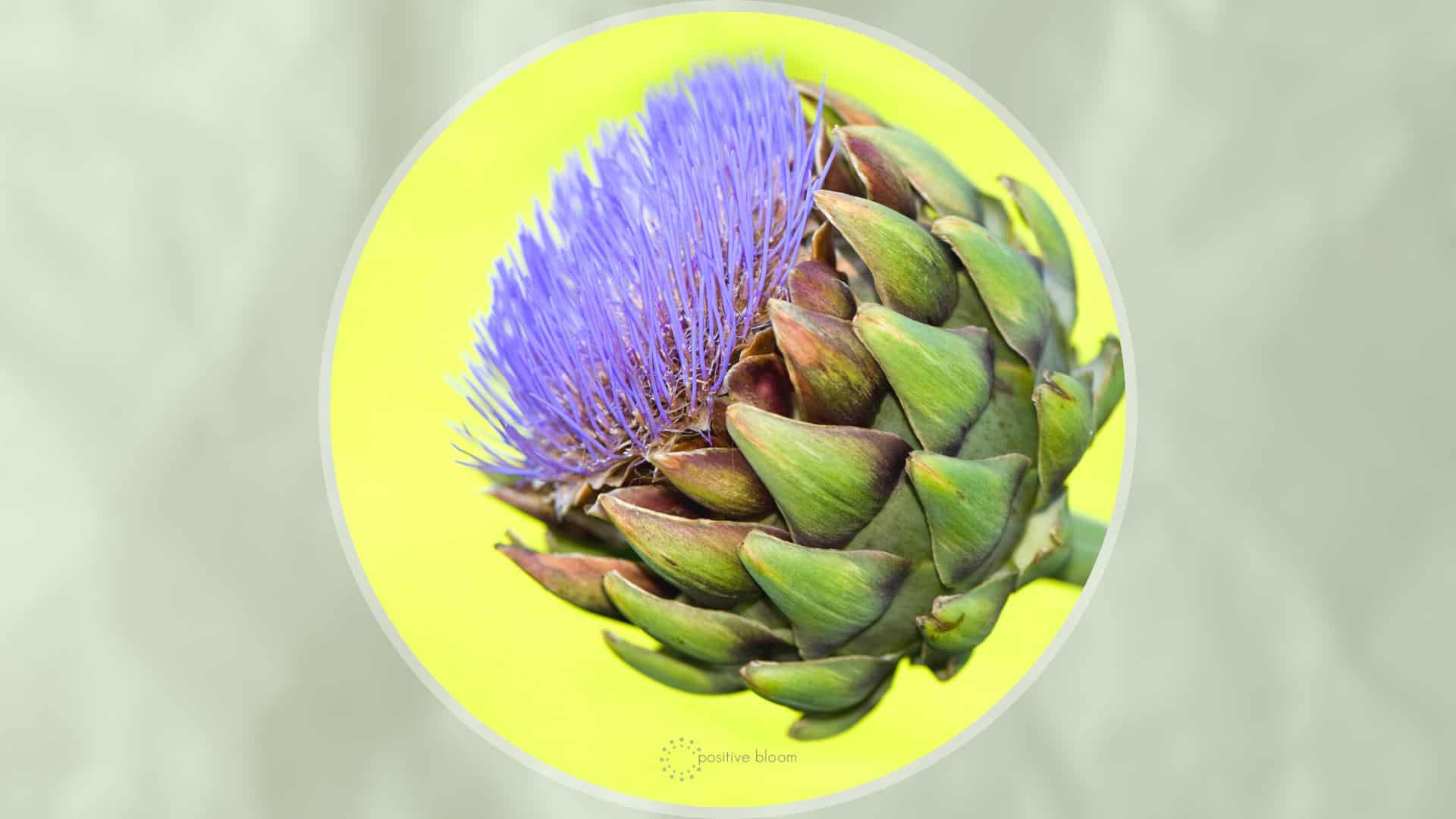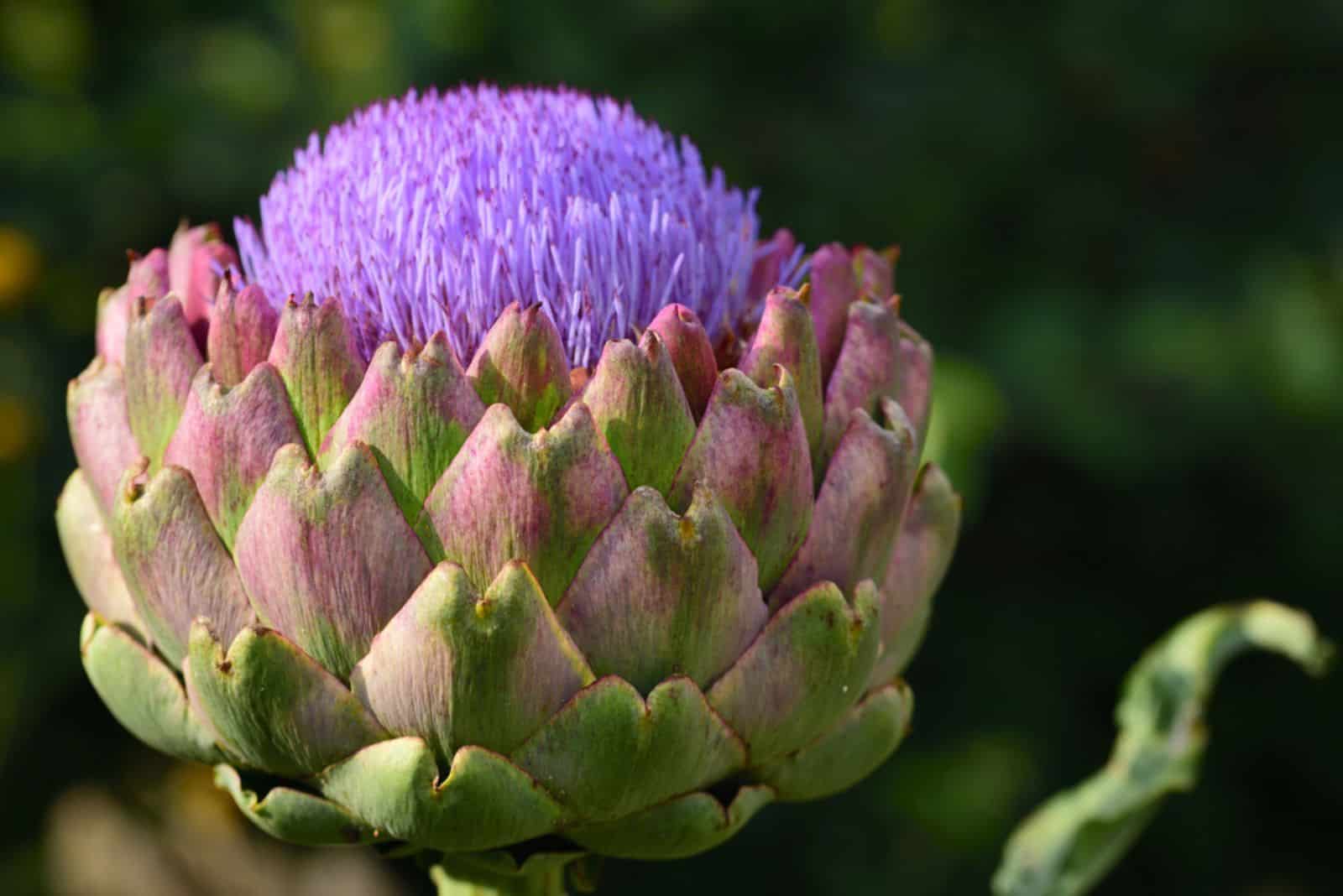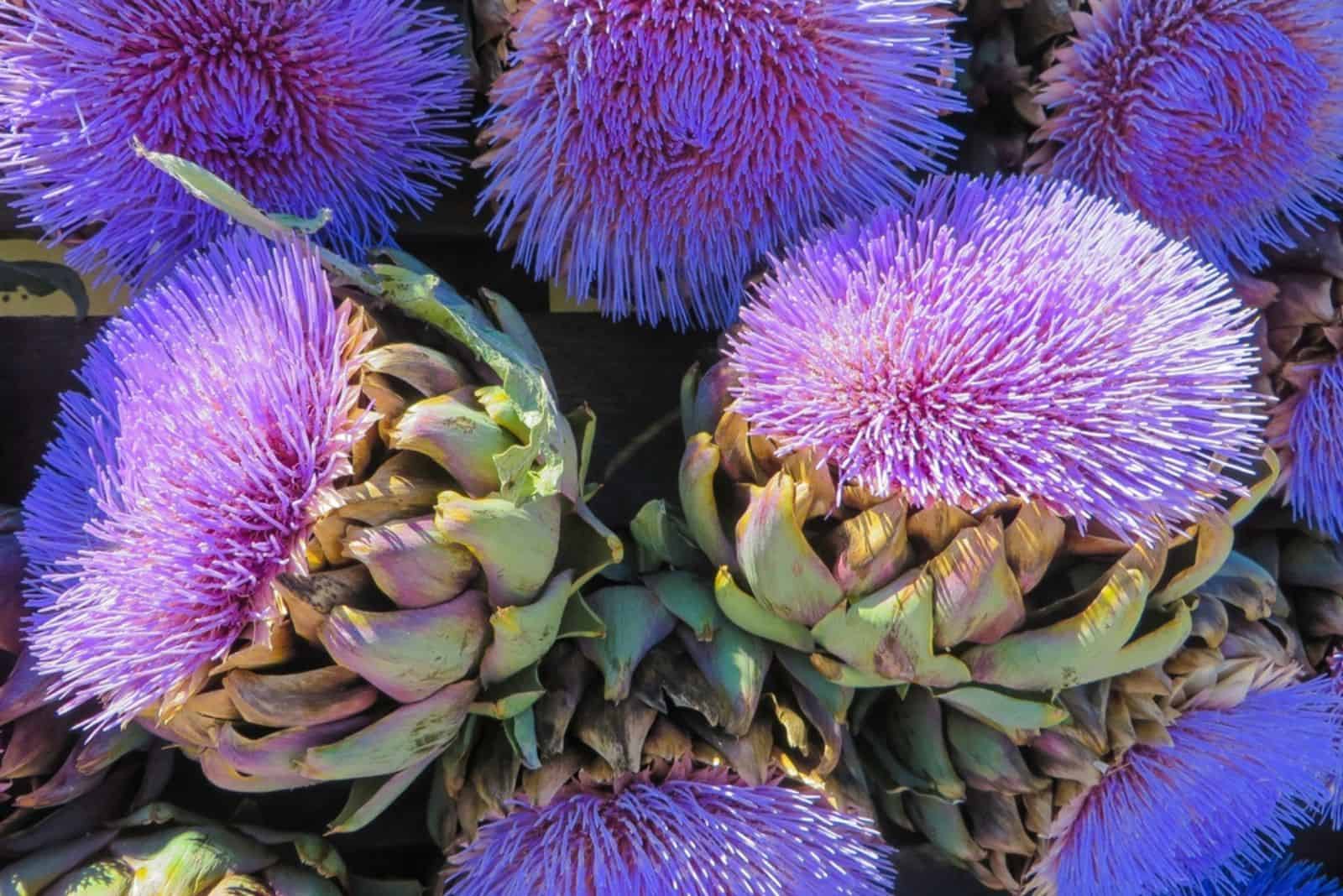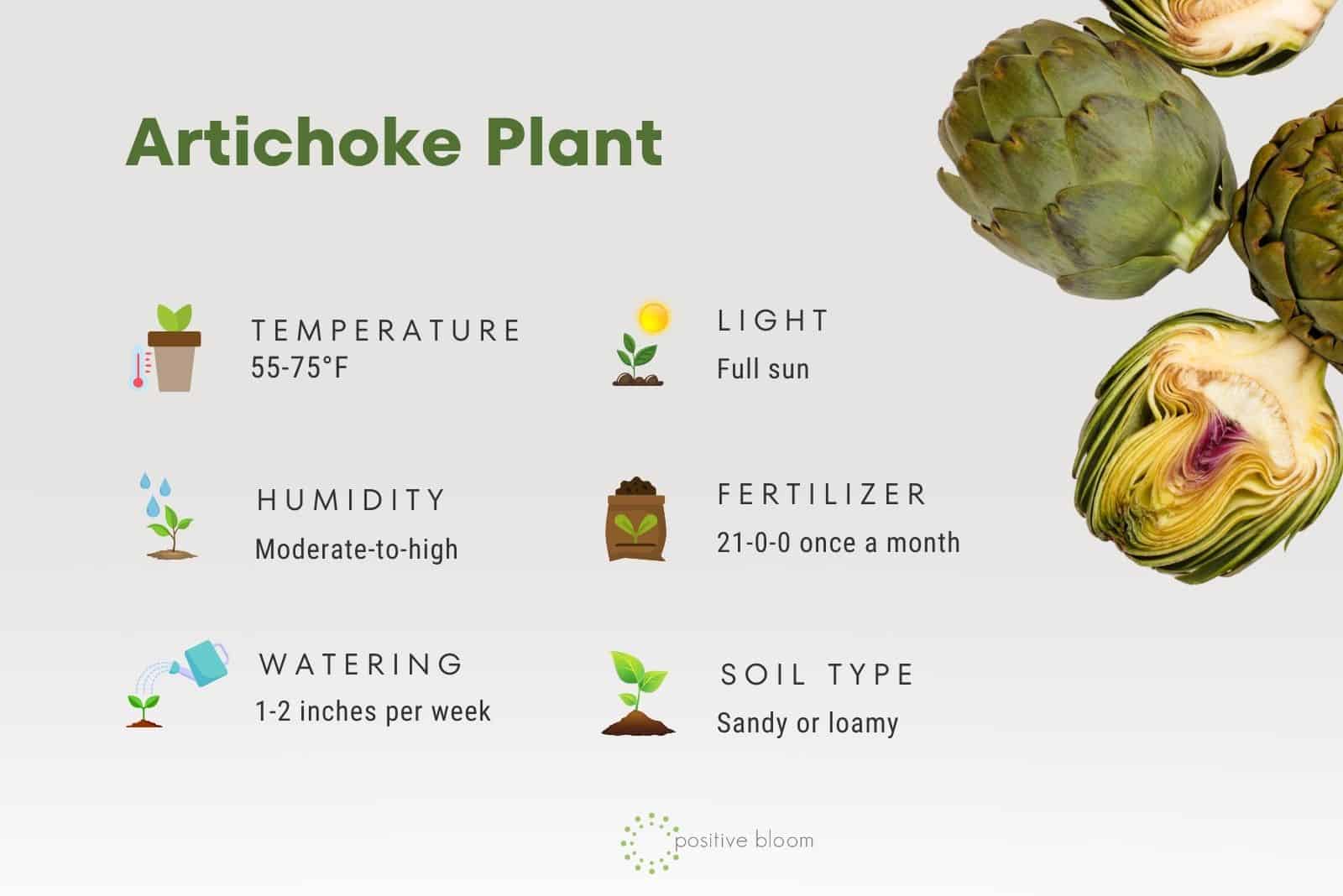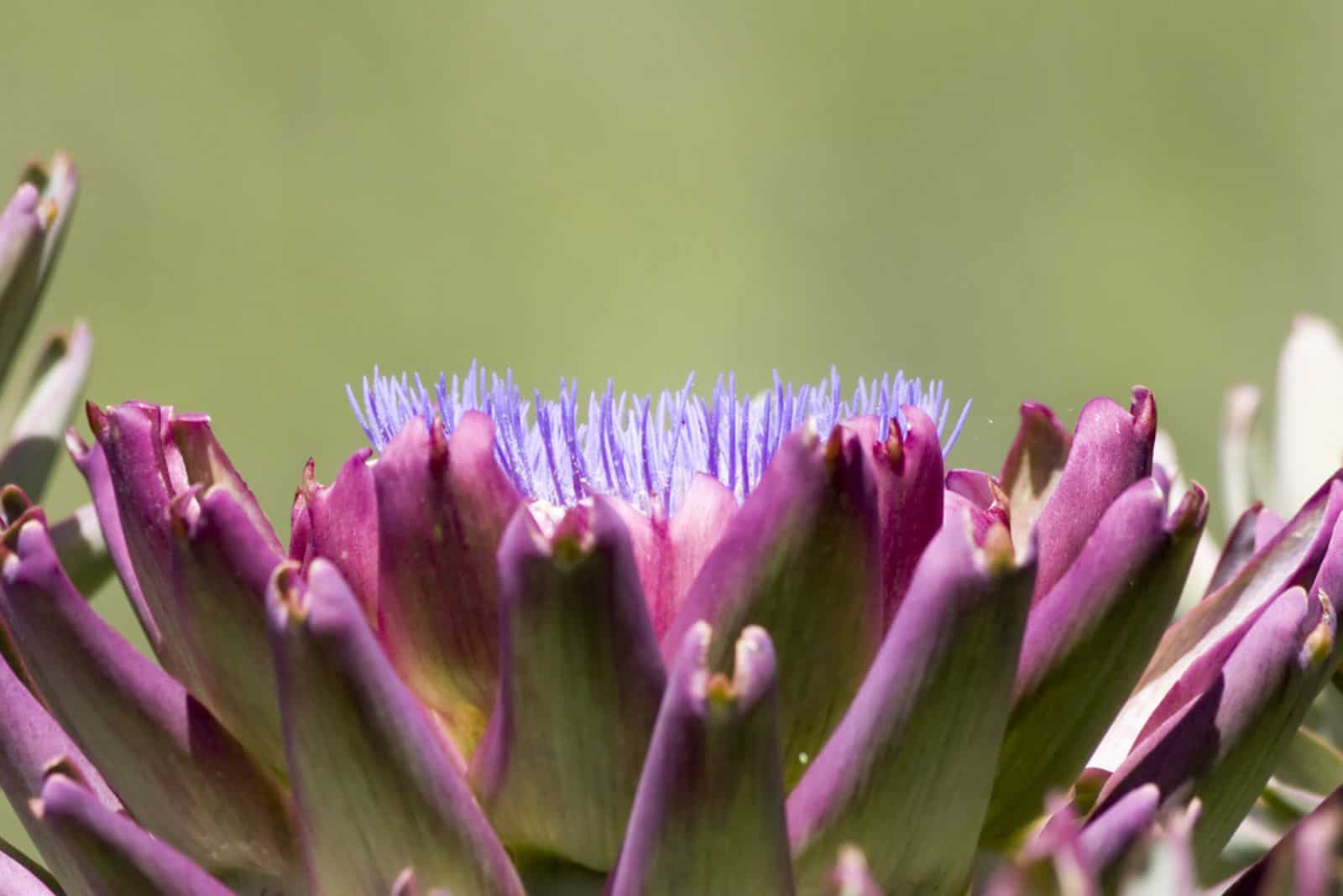Artichokes are a famous and healthy vegetable, but there’s more to them than meets the eye.
These plants produce breathtaking blossoms if you don’t harvest them, and can transform your plain vegetable garden into a beautiful lot.
In this article, we’ll present all there is to know about artichoke flowers: what they are, when they appear, whether you can eat them, and their benefits.
We’ll also discuss the basic requirements that this vegetable needs in order for you to nurture healthy plants and get plenty of amazing blossoms.
Before we get to all that, let’s learn a thing or two about artichokes:
[table id=659 /]
What Are Artichoke Flowers?
Artichokes are on the list of vegetables you can grow in Arizona, and are usually prized for their delicious flower buds.
However, if you don’t harvest these buds, they will open and exhibit mesmerizing pink or purple blossoms.
The flower stalks can get quite tall (6-7 feet), so they’ll really stand out in your vegetable garden.
The plant bears about 4-6 flower buds in the first year and 10-12 buds the second year, and if you let them all blossom, you’ll have a gorgeous flower garden.
When Do Artichokes Flower?
The beautiful flowers of this unique vegetable appear in late summer, but you will have to wait for the second-year-growth if you started these plants from seeds.
Artichoke plants produce heads until the first fall frost, so you’ll be able to enjoy the flowers for a long while. (Or you can harvest some buds to steam with aromatics such as bay leaf, lemon, and garlic.)
Are Artichoke Flowers Edible?
Sadly, the blooming artichoke isn’t fit for eating, and if you want to use it for certain recipes, you’ll have to harvest it before its buds open and expose flowers.
Once the plant blooms, the insides become tough and stringy, which makes them quite difficult to consume.
However, they’re not poisonous, so you won’t have to worry about consequences if you do decide to eat them.
The Benefits Of Artichoke Blooms
Even though you can’t eat the flowering artichoke, it doesn’t mean that all the benefits are gone.
For instance, if you allow this perennial plant to bloom, its gorgeous flowers will attract bees, bumblebees, and other pollinators because they are rich in nectar.
And once the blossoms are pollinated, they’ll produce artichoke seeds you can harvest and plant the following year.
The blooms look stunning and can get quite tall, so they’ll be a real sight to see and a perfect fit for various landscaping designs.
You can also harvest these blossoms to use in fresh bouquets and flower arrangements, or dry them for your other projects.
When drying artichoke blooms, cut the flower stalk with sharp scissors, tie a thread at the bottom, and hang them upside-down in a cool and dry room. And once all moisture from them has gone, you can implement them in your unique flower projects.
The Meaning Of Artichoke Blossoms
Every flower symbolizes something, and the same goes for artichoke flowers, even though they are technically a vegetable.
The flower meaning of artichokes represents future accomplishment, hope, success, and prosperity.
These plants have a soft heart underneath the tough outside, so they also symbolize hope and faith in future love.
Artichoke Plant Quick Care Guide
Growing artichokes isn’t that hard, although they do require some attention whether you want to harvest and eat them or let them bloom.
Below, you can learn a couple of tips for nurturing these veggies and keeping them healthy and thriving.
Light Requirements
Artichokes require full sun to thrive, so make sure to plant them in a location where they can get early morning or late afternoon direct sunlight, and are protected from harsh midday light.
You can also grow these plants indoors (if you have the room) or in a greenhouse, and in that case you should invest in artificial lights for plants to ensure optimal growth and development.
Water And Humidity
These plants are quite thirsty, and you shouldn’t allow their growing medium to completely dry out or be waterlogged since that’ll make them fail.
You should give your artichokes 1-2 inches of water each week, which might result in you having to irrigate them up to three times per week.
In winter, especially if you live in a rainy region, you don’t have to water these veggies at all, or you can irrigate them every 2-3 weeks.
Humidity
These plants require moderate-to-high humidity levels and thrive best when you mimic their native habitat.
The Mediterranean region is usually dry in the summer and humid in winter, with relative humidity of about 60%.
Luckily, you can supplement the air moisture by watering your plants more frequently (or less often if you live in a more humid region) to keep them healthy.
Temperature
Artichokes prefer mild temperatures and thrive best when the daytime temperatures are between 65-75 degrees Fahrenheit, and the nighttime ones between 55-60 degrees.
They can tolerate cooler conditions and can technically survive temperatures as low as 25 degrees Fahrenheit. However, anything lower than 30-35 degrees can be fatal for these plants, so protect them in winter if you live in colder regions.
Soil And Fertilizer
Artichokes flourish in loose, fertile, and well-draining substrates, and the sandy and loamy ones are the best.
You can amend your garden soil by adding some compost and horticultural sand to it to make it perfect for these veggies.
And if you’re not sure about how much compost and sand you should add, you can always get potting soil for vegetables because they have the perfect balance between drainage, fertility, and water-retention.
Once you plant your artichokes, you can also place some organic mulch at the base of the plant to keep moisture in and prevent dehydration, stop weed growth, and enrich the soil with nutrients as it decomposes.
But this vegetable is a bit more demanding when it comes to care, so you should remove the mulch once the flower buds appear, and add a layer of compost to feed it.
Fertilizer
Artichokes require plenty of nitrogen to develop properly, so you should add nitrogen fertilizer once a month starting a month after transplanting it outside.
Use 21-0-0 fertilizer and sprinkle it around the base of your plant. Afterwards, irrigate the plant deeply and thoroughly so that the fertilizer can release the nutrients.
Final Thoughts
Artichoke flowers are a beautiful purple or pink addition to your garden that attract many pollinators.
You can get these blooms by simply not harvesting your artichokes and leaving their flower buds to open.
On the one hand, you can’t eat them, but on the other, you’ll get many pollinators in your garden, seeds for next year’s crop, and a lot of material for your flower arrangements and projects (not to mention a beautiful display).
Finally, we included a short care guide to help you nurture your artichokes and keep them thriving for many a year.
Until next time!

